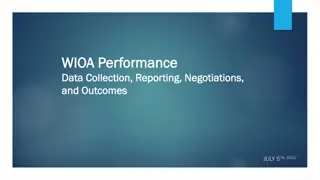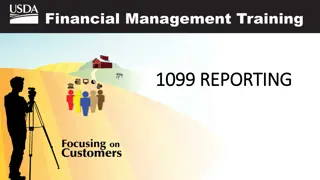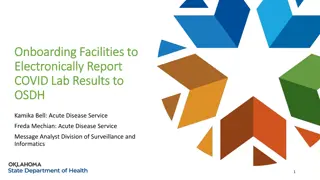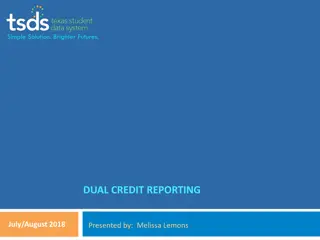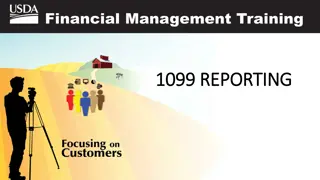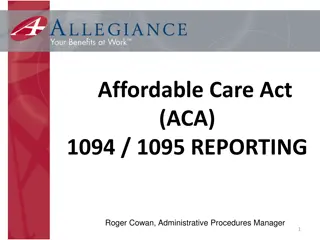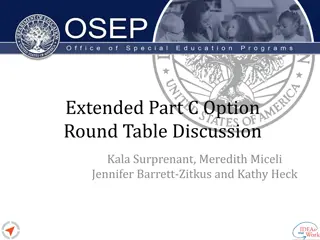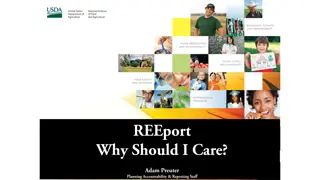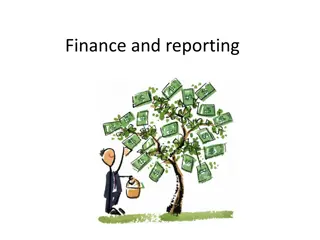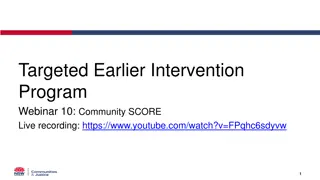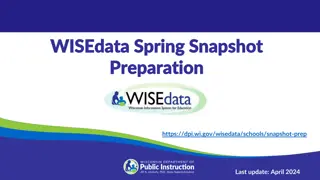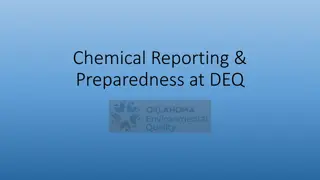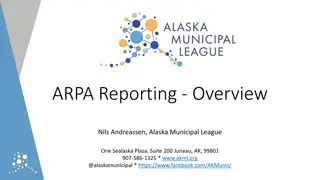Efficient Reporting Guidelines for Project Outcomes
Detailed instructions on filling out the project report, emphasizing clarity, accuracy, and relevance. Follow specific guidelines for presenting achievements and results to ensure comparability and concise information delivery to the Commission.
Download Presentation

Please find below an Image/Link to download the presentation.
The content on the website is provided AS IS for your information and personal use only. It may not be sold, licensed, or shared on other websites without obtaining consent from the author. Download presentation by click this link. If you encounter any issues during the download, it is possible that the publisher has removed the file from their server.
E N D
Presentation Transcript
DG Justice and Consumers INDICATORS Quantitative report on Outputs By A4. Programme Management Unit 1 DG Justice
Application Form => FORECAST Final Report => ACHIEVED RESULTS 2
What are the indicators? 1) Analytical activities 2) Training activities 3) Mutual learning, exchange of good practices, cooperation; 4) Awareness-raising, information and dissemination. 3
Reporting after the end of your project Final Technical Report Description/Narrative part on achievements, results & implementation of activities Annex 2: Final financial statement Report on the financial statements of the project Annex 3: Indicators Quantitative report on policy-related outputs : Statistical reporting on outputs 4
Annex 3: Indicators as an excel sheet available in the Call website 5
What is the use of this reporting? It is a Summary presenting the main results of your project in quantitative terms. The Commission requests from all projects comparable and concise information on their results. The aim is to measure the performance/results of the respective call for proposals and of the Programme. 6
How do you fill it out? Be consistent with the Outputs of your project, as you presented them in detail under the Workstreams. Be realistic; don t exaggerate; reflect the actual achievements of your project. You don t have to fill out every box! Fill out ONLY the boxes relevant to your project! 7
How do you fill it out? Avoid abbreviations (unless commonly used)! Be as specific as possible: the information should be clear to persons who haven t read your project referring generally to volunteers , experts , NGOs , researchers , professionals , other EU States judges and prosecutors , participatingNGOs . 4 categories of activities: You should count the results of each activity only once. If you consider that an output meets the criteria of more than one category of activities, you should count it under the category that is most relevant to its objectives. e.g. avoid 8
Category 1: Analytical activities Reports aiming at the collection of data and statistics, the development of common methodologies on data collection, the development of indicators, benchmarks etc; Reports aiming at providing research, analysis, evaluation and policy recommendations, etc; Guides, manuals, handbooks, toolkits, educational material, etc. 9
Category 1:Analytical activities COUNT: Only once each stand-alone & finalised output/deliverable. DON T COUNT: X data collection, analysis of this material and the analysis report = ONE deliverable; X draft reports; X Don t count separately the tools to be used for drafting your report (e.g. questionnaires; interview questions; tables and graphs; fiches which will be compiled into a report; agreed methodology for your research; grid to collect data); X If more partners are drafting parts of one report, you don t count each contribution as one separate report. 10
Category 1: Analytical activities DON T COUNT: X Reports for the Commission as foreseen in the Grant Agreement (i.e. Progress report, Final report); X Documentation for the internal management and implementation of the project (e.g. Plan for the project implementation; report on a partners meeting or study visit; Project evaluation); X Reports on other types of activities (e.g. Conference report, seminar report); X Training material. 11
Category 2: Training activities Number of training events organised; Groups of professionals and number of persons trained; Number of training modules developed. 12
Category 2: Training activities - Training: when a trainer transfers knowledge to a group of persons; - Mutual learning activity: when people come together to learn from each other. - Be specific in defining the group of professionals; - Under training module you should count a specific and practical training package that can be reproduced in more than one events. DON T COUNT: X training limited to project staff; X a report on a training event should not be counted as a training module. 13
Category 3: Mutual learning, exchange of good practices, cooperation Number of events organised; Groups of professionals and number of persons who participated in these events; Number of eligible countries involved in these events; Mechanisms/tools of cross-border cooperation. 14
Category 3: Mutual learning, exchange of good practices, cooperation - Training: when a trainer transfers knowledge and/or skills to a group of persons; - Mutual learning activity: when people come together to learn from each other; - Awareness-raising event: when the aim is to provide information to a wider group of persons. 15
Category 3: Mutual learning, exchange of good practices, cooperation - Mechanism/tool of cross-border cooperation: wide notion. It should be a long-term and sustainable deliverable to be maintained after the project s end(such as a network). (DON T COUNT: field visits, deliverables counted elsewhere) It should be concrete and tangible. (DON T COUNT: Exchange of knowledge or of best practice) (DON T COUNT: Websites =>to be counted under awareness-raising) 16
Category 4: Awareness-raising,information and dissemination Events organised (e.g. campaigns, conferences, etc); Groups of persons and number of persons reached by these events; Type of materials used (booklets, flyers, websites, etc) and number of copies produced per type of material. 17
Thank you for your attention! QUESTIONS ? ? ? 18 DG Justice






